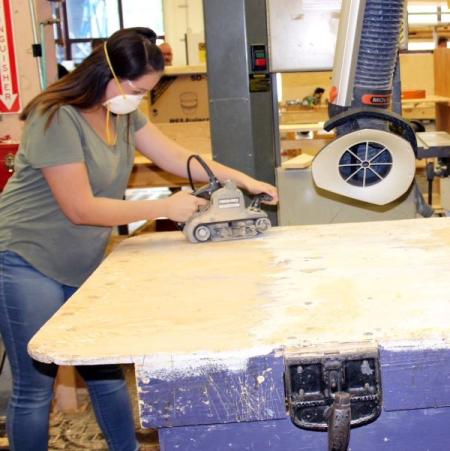Public Technical and Career Schools/Centers
Accreditation Process - Technical and Career Schools/Centers
The accreditation process is a supportive partnership between member institutions and NEASC as they work together throughout an ongoing 10-year cycle. The process of NEASC Accreditation is multi-dimensional and continuous and engages schools/centers in comprehensive analysis, self-assessment, and planning in response to the Standards of Accreditation.
To achieve and maintain accreditation, the school must be engaged in a cycle of continuous improvement relative to the Standards, which includes a comprehensive Self-Study, an on-site school Visit conducted by a Visiting Team of peer evaluators, and engagement in follow-up activities in response to Committee actions.
Self-Study
An institutional Self-Study in preparation for an on-site peer-reviewer team visit is the cornerstone of the accreditation process. At the beginning of the Accreditation cycle (based on a 10-year schedule), a school/center is encouraged to analyze and assess its own functions, its educational effectiveness, and its strengths and weaknesses through an in-depth Self-Study involving the entire school community. This reflective process helps a school plan and prioritize how it will maintain its strengths and correct its weaknesses, thus improving its level of educational quality and the effectiveness of teaching and learning.
A Self-Study is normally prepared within the year prior to a school/center's scheduled NEASC Visit, but some institutions may choose to take more time. The results of the Self-Study are reviewed by a team of peer educators which visit the school/center in order to interview members of the staff and community, view the facilities, and observe classes in session.
Decennial Visit
The on-site visit takes place upon the completion of the school's Self-Study. In this phase of the process the Committee develops a team, who are peers of the school faculty and administration, and sends the team to the school to read the Self-Study and spend three or four days visiting the school and its classrooms, interviewing faculty, parents and other stakeholders, students and administrators. The Visiting Team’s purpose is to seek evidence of the conclusions the school has made about itself and, subsequently, present its observations about how well the institution aligns with the Committee’s Standards. Those findings are then presented to the school in a report form, identifying priorities and highlighting both strengths, weaknesses, and a roadmap for continuing improvement.
Follow-up and Reports
The Visiting Team writes a thorough report documenting its observations and recommendations. The report is then reviewed and considered by NEASC when deciding whether or not to recommend an institution for initial accreditation or to reaffirm its accredited status. The report also serves as a roadmap for the school's improvement goals and planning. The granting of NEASC Accreditation is recognition that the school is achieving the goals it has set for itself and that these goals are educationally sound when measured against the Standards of Membership.
Focused Visit
The Committee on Technical and Career Institutions mandates as a matter of policy that all of its accredited institutions must undergo a focused visit no later than five years following a decennial or initial accreditation visit. If deemed necessary, the Committee may also request a focused visit at a time other than the five-year point. The process includes two major components: (1) a report prepared by the staff of the institution scheduled for a focused visit, and (2) a site visit conducted by a visiting team assigned by the Committee office.
The purpose of the Focused Visit Report and the ensuing site visit is to inform the Committee on Technical and Career Institutions of significant developments and progress made by the institution since its most recent decennial on-site visit to include any progress reports or other actions required of the institution by Committee policy or specific action.
A Focused Visit Report requires preparation at least six months prior to the visit.

Image c/o Shawsheen Technical High School

